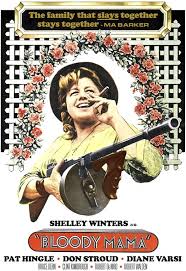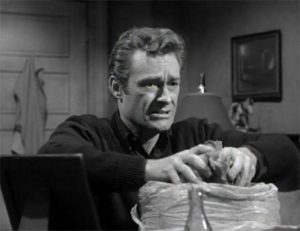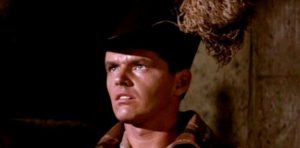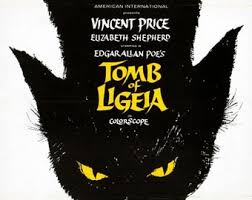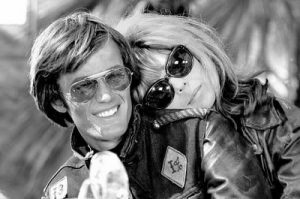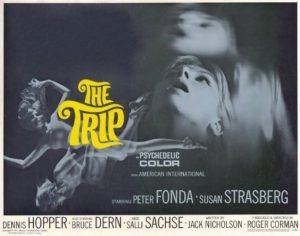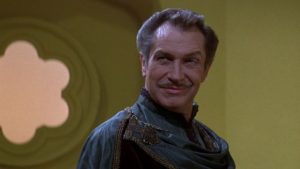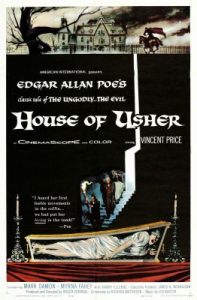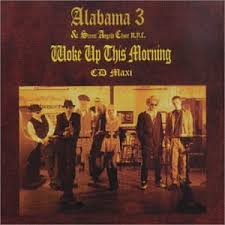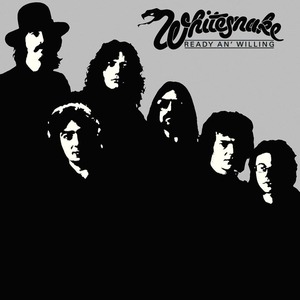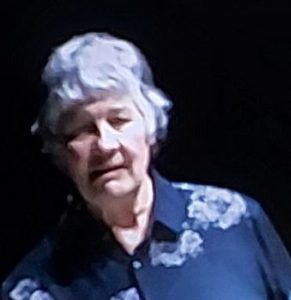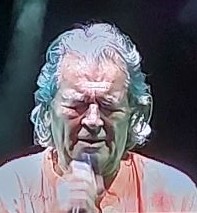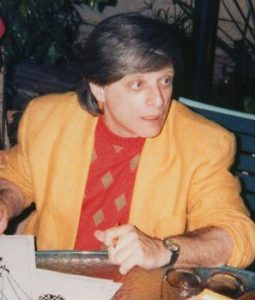
From wikipedia.org / © Pip R. Lagenta
I’ve just discovered that yesterday, May 27th, would have been the 90th birthday of writer Harlan Ellison. I don’t know if nowadays I’d describe Ellison as one of my all-time favourite writers, but he was certainly a massive influence on me when I was growing up and trying to write stuff myself. Here’s an updated version of something I wrote about him in 2018, just after he’d passed away at the age of 84.
Harlan Ellison was often categorised as a science-fiction writer, although he once memorably warned anyone who called him a science-fiction writer that he would come to their house and ‘nail’ their ‘pet’s head to a coffee table’. In his lifetime the Cleveland-born Ellison authored some 1800 stories, scripts, reviews, articles and opinion pieces, but it’s as a short story writer that he was best known. In fact, when he was in his prime, from the 1960s to 1980s, he was responsible for some of the boldest and most exhilarating short stories I’d yet come across. He seemed to push both his imagination and his writing energies to the very limit.
Describing his stories is difficult, but the nearest comparison I can think of is the fiction of Ray Bradbury. However, Ellison’s work also had counter-cultural and radical political tones that encompassed both the idealism of the 1960s’ civil rights movement and Summer of Love and the cynicism and despair that came with the Vietnam War and, in the 1970s, Watergate. His short stories frequently contained a palpable anger too. Yes, Ellison had a lot of anger in him. More on that in a minute.
By focusing on his short stories, I don’t wish to denigrate his occasional novels. Indeed, I’d rank 1961’s Spider Kiss alongside Iain Banks’ Espedair Street (1987) and John Niven’s Kill Your Friends (2008) as one of the best rock ‘n’ roll novels ever.
Ellison wasn’t a big name in the UK but in the 1970s – perfectly timed for my development as a teenager – Britain’s Pan Books brought out editions of several of his short story collections, like The Beast that Shouted Love at the Heart of the World (1969), Approaching Oblivion (1974) and Deathbird Stories (1975). All had gorgeously psychedelic covers by (I think) the artist Bob Layzell. It’s fair to say that my 14 or 15-year-old mind was blown by them.

© Pan Books
I also loved how Ellison prefaced each story with a short essay describing how it had come into being. These pieces gave insight not only into his combative personality but also into the rich life-experiences he’d had, or claimed to have had. Before establishing himself as a writer he’d been, among other things, a truck driver transporting nitro-glycerine, a hired gun and a tuna fisherman. This inspired me when I was a budding writer to try my hand at different jobs and build up my experiences, though the stuff I ended up doing – stacking shelves in Sainsbury’s, working in a shoe warehouse, serving as a warden at Aberdeen Youth Hostel – was rather less glamorous than the items on Ellison’s CV.
Some of his work also appeared on television, although TV was a medium he generally had a low opinion of. In a 2013 interview he accused it and other modern forms of entertainment and communication of having “reduced society to such a trivial, crippled form that it is beyond my notice.”
For instance, he scripted the 1967 Star Trek episode The City on the Edge of Forever, which has Captain Kirk, Mr Spock and Dr McCoy catapulted back in time to 1930s America and confronted with an agonising time-travel-related moral dilemma. Do they intervene in an accident and prevent the death of a woman called Edith Keeler who (despite being played by Joan Collins) is a noble political activist dedicated to peace, pacifism and public service and with whom, predictably, William Shatner’s horn-dog Captain Kirk has fallen in love; or do they let her die, which means her political movement won’t gain power in the USA, delay her country’s entry into World War II and allow the Nazis to become masters of humanity, which will happen otherwise?
Thanks to its inventive and thought-provoking spin on time travel, The City… is the best episode of the original series of Star Trek. In fact, as I don’t like any of the later TV incarnations of Star Trek, I’d say it’s the best Star Trek episode, full stop. Ellison, however, was unimpressed with how the show’s producer Gene Rodenberry and his writing staff rewrote his script and watered down some of its themes and was never slow to sound off about it afterwards. It may be significant that his later short story How’s the Night Life on Cissalda? (1977) features William Shatner attempting to make love to a revolting-looking alien creature. Shatner’s toupee falls off in the process.

© Desilu Productions
More time-travelling figures in the Ellison-penned episodes Demon with a Glass Hand and Soldier that he wrote for the TV anthology show The Outer Limits (1963-65). Years later, he was incensed at what he saw as plagiarism of elements of his Soldier script by James Cameron while he was making the first Terminator movie in 1984. Ellison threatened to sue and got a payment of 65-70,000 dollars from Cameron’s financiers and an acknowledgement on The Terminator’s credits. By 2014 Ellison had mellowed to the point where he could see the funny side of it. He played himself in an episode of The Simpsons in which he gets into an argument with Milhouse Van Houten. When Millhouse comments, “I wish someone would have come from the future and warned me not to talk to you,” Ellison grabs him by the throat and screams, “That’s my idea!”
In fact, Ellison was highly litigious. After discovering his writing, I found an interview with him in an American magazine called Future Life where he talked about suing Paramount Television for stealing an idea of his, about a robot policeman and a human one who are partnered together, and turning it into a TV show called Future Cop (1976-78). “We’re going to nail their asses to the barn door!” he declared in the interview. Later, when I was playing rugby for my school and while we were trying to psych ourselves up against our opponents, I inadvertently let slip with Ellison’s phrase: “We’re going to nail their asses to the barn door!” I exclaimed. That earned me some strange looks from my teammates. Nailing asses to barn doors was not part of the common vernacular on south-of-Scotland rugby pitches.
I can honestly say that for a period when I was a teenager, Harlan Ellison, with his mind-bending fiction, his braggadocio, his adventurous backstory and his take-no-shit-from-anyone attitude was the person I wanted to be. Of course, as I grew older and became less impressionable and more mature, and learned more about Ellison, that changed. I began to appreciate that Ellison’s persona involved a fair bit of self-mythologizing, egotism and unwarranted bloody-mindedness. When Stephen King observed that he knew one writer who was convinced that Ellison was the reincarnation of Jonathan Swift and another writer who referred to him as a ‘son-of-a-bitch’, I found myself in sympathy with both viewpoints.
And by the time I read a profile of him in a non-fiction book called Dream Makers (1980), written by Charles Platt, I was disappointed but somehow unsurprised to encounter a character rather too driven by vanity and rather too desperate to impress. Ellison and Platt later fell out badly, violently it’s said, though not as far as I know about the Dream Makers profile.
Also falling out with Ellison was the late English writer Christopher Priest, who took issue with Ellison’s editorship of the Dangerous Visions series of science fiction anthologies in the early 1970s. There was supposed to be a third volume in the series but for reasons known only to Ellison himself it never appeared, leaving a lot of commissioned stories in limbo and depriving a lot of authors of potential earnings. This seems hypocritical of Ellison, considering how famously touchy he was about payment for his own work – he’s said to have once mailed a wayward publisher ‘213 bricks’ and a ‘dead gopher’ as a protest. Priest even wrote a short, investigative book about Dangerous Visions 3’s non-appearance, inevitably entitled The Book on the Edge of Forever (1994). Priest’s website notes how an anonymous review of his book on Amazon, headlined Mean-Spirited Jealousy and giving it one star, “bears all the hallmarks of Mr Ellison’s own unmistakable style: florid overstatement and a fog of half-truths intended to cloud the issue. Well worth a visit to witness the great man in action, a rare sight!”

© Fantagraphics Books
And although Ellison was a vocal supporter of the USA’s Equal Rights Amendment, much of that good work was undone in 2006 when he groped the writer Connie Willis onstage at an awards ceremony. I’ve seen a clip of the incident and am inclined to think Ellison believed he was indulging in some harmless japery, but that’s not to say he wasn’t massively disrespectful towards Willis and didn’t make a colossal arse of himself. He also did himself no favours when, after he’d issued an apology – one commentator described it as something that “could only loosely be construed by a chimpanzee whacked on smack as an apology” – and after Willis hadn’t acknowledged it, he ranted abusively about her on his official message board.
Still, as I came to know the artist’s failings, and revised my opinion of him, I focused more on the quality of the art itself. And with Ellison, some of that art was amazing. Here’s a list of ten of his short stories that bowled me over when I read them.
Delusion for a Dragon Slayer (1966). An unremarkable little man suddenly finds his soul transplanted into the body of a Conan-the-Barbarian-type swordsman in a blood-and-thunder fantasy land. What follows is a merciless dissection of the inadequacies of the nerdy males who read sword-and-sorcery stories. I actually write sword-and-sorcery stories, so I’m allowed to make sweeping generalisations like that.
Pretty Maggie Money Eyes (1967). This sad, haunting story is about a woman’s spirit inhabiting a Las Vegas slot machine and the down-on-his-luck gambler whom she – possibly – takes pity on.

© LQ / Jaf Productions
A Boy and His Dog (1969). A post-apocalyptic satire that’s a spot-on blend of anarchy and irreverence, featuring as its main character a young hoodlum and an intelligent, telepathic and sarcastic canine. It was filmed in 1975 by L.Q. Jones, with a youthful Don Johnson in the lead (human) role. Though the movie version isn’t perfect, it still holds up better than a lot of other, more portentous sci-fi films made in the same decade.
Along the Scenic Route (1969). A biting analysis of the relationship between Americans and their cars, Scenic Route details how a couple out for a leisurely drive end up competing in a lethal demolition derby. It prefigures a lot of ‘dystopian-vehicle’ movies like Death Race 2000 (1975) and the Mad Max ones.
One Life, Furnished in Early Poverty (1970). Another of Ellison’s time-travel tales, this grippingly melancholic one is about a man going back in time and befriending his younger self while he’s a bullied, insecure child.
Bleeding Stones (1973). This is quite simply a story that made my jaw drop with its combination of brutality, blasphemy and surrealism.

© Pan Books
Hindsight: 480 Seconds (1973). End-of-the-world stories are a dime-a-dozen in science fiction, but the brilliantly simple yet elegiac concept behind this one has always stayed with me. It’s about a poet who volunteers to stay on an about-to-be-destroyed earth after the rest of humanity have been evacuated, so that he can provide a commentary on his planet’s dying minutes.
I’m Looking for Kadak (1974). This Kurt-Vonnegut-meets-Woody-Allen-type comedy is about the tribulations facing a group of blue, eleven-armed aliens on a far-flung planet who’ve converted to Judaism. The minyan – quorum – for communal Jewish worship is ten, and they want to sit shiva, i.e., conduct the rituals of mourning for a departed friend. The problem is that there’s now only nine of them on the planet. So the hero sets off on an epic quest to find a long-lost Jew, Kadak, in the hope he’ll serve as the tenth.
Shatterday (1975). In this unsettling tale, a man accidentally phones his own apartment one evening and finds himself talking to himself. In fact, this other self is a sinister doppelganger who’s appeared from nowhere and is planning to usurp him from his existence.
Count the Clock That Tells the Time (1979). Taking its title from a sonnet by William Shakespeare, this describes how a lethargic never-do-well gets trapped in a weird, ghostly netherworld. It’s a cautionary tale about the dangers of wasting time and frittering your life away – something you couldn’t accuse the famously prolific Ellison of doing.
So, thank you for the entertainment and the inspiration, Mr E. May you rest in un-cantankerous and non-litigious peace.

© Pan Books

